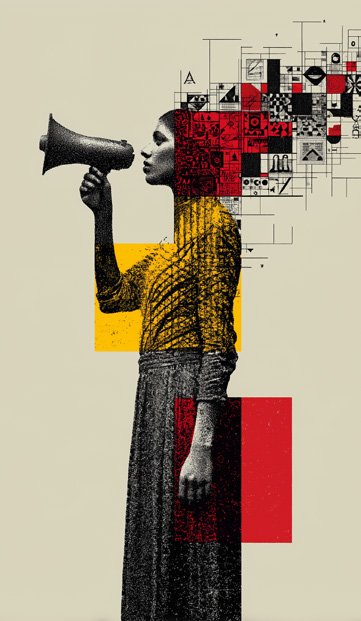MCAA Annual Conference 2025 - Science in the Age of Misinformation: Bridging the Trust Gap
Newsletter

Science in the Age of Misinformation: Bridging the Trust Gap
Science communication is no longer just about sharing knowledge—it is about fighting misinformation, building trust, and engaging with people where they are. The recent MCAA Annual Conference tackled these challenges head-on, bringing together experts from journalism, policy, and research to discuss how we can strengthen public confidence in science.
Organized by Ashish Avasthi from the MCAA communication working group and moderated by Claudia Alarcon, Science Diplomat at the Interamerican Institute for Global Change Research, we were able to listen to three important speakers: Subhra Priyadarshini, Chief Editor at Nature Global Portfolio, Lisa Ginsborg, Research Fellow at the European Digital Media Observatory and Agata Gurzawska, Research Manager at Trilateral Research, Coordinator of the EU-funded VERITY project on trust in science.
The Speed of Misinformation
Subhra Priyadarshini was stating the truth of what we all saw during the COVID-19 pandemic: “Imagine a small Indian village in 2021, where a woman refuses the COVID-19 vaccine, fearing it will alter her DNA.
Meanwhile, halfway across the world, a social media influencer with no scientific background convinces millions that masks are useless. This is the power of misinformation—it spreads six times faster than the truth. Why? Because it appeals to emotions more than facts”. But this is not the only reason: lately, institutional distrust is making people question even well-established science. COVID-19 was an inflexion point. “Only some countries were well prepared, with clear social media campaigns, and trustworthy community leaders, being able to increase vaccination rates”, said Subhra, “So the lesson is, clarity can build trust and save lives.”
Lisa Ginsborg (Research Fellow at the European Digital Media Observatory), Agata Gurzawska (Research Manager at Trilateral Research, coordinator of the EU-funded VERITY project on trust in science) and Claudia Alarcon Lopez (Science Diplomat STeP, Interamerican Institute for Global Change Research, and presenter) during the talk, together with Subhra Priyadarshini (Chief editor at Nature Global Portfolio ) who attended remotely. Photo taken by event organisers.
Science Must Meet People Where They Are
The solution is not just about making facts available—it is about making them accessible and relatable. Subhra Priyadarshini shared key strategies: Simplify, but do not oversimplify— break down complex topics. Tell stories, not just statistics—data alone will not change minds, but personal stories might. Engage in real dialogue—trust is built through two-way communication, not one-way messaging. Go where the audience is—whether it is TikTok, community forums, or schools, scientists need to meet people in their spaces.
The Battle Against Misinformation
Lisa Ginsborg, from the European Digital Media Observatory (EDMO), stressed the complexity of disinformation. It is not just about fake news—it is a whole ecosystem of misinformation, disinformation, and propaganda, often fuelled by political and economic interests. EDMO is actively tracking trends in misinformation, especially in areas like climate change and health, to build resilience through media literacy and fact- checking networks.
But is regulation the answer? Not necessarily. Lisa warned that while some regulations aim to curb misinformation, they can also be used to suppress free speech. Instead, Europe is focusing on two points: to allow the free flow of information and public debate by experts and transparency—ensuring that social media platforms take responsibility for how misinformation spreads while empowering researchers with better data access.
The Trust Crisis in Science
Agata Gurzawska from the VERITY project pointed out another challenge: Trust in science remains high, yet people often reject science-based recommendations (COVID-19, climate change). Why? Agata pointed to four possibilities:
- •Science is inherently uncertain. It evolves with new discoveries, making it vulnerable to misinterpretation.
•The research landscape is shifting. Private- public partnerships, social media platforms, and citizen science all influence trust in ways we have not fully understood.
•Science, politics, and the economy are deeply connected. The commercialisation of research can create higher levels of distrust in society.
•Trust is now decentralised. It is no longer just about institutions – social influencers, community leaders, and individuals all play a role in shaping public perception.
“We need to redefine how we think about trust in science,” Lisa explained. “It is an ecosystem, and every stakeholder (as Stewards of Trust)---from policymakers to educators, from journalists to everyday citizens—has a role to play.”
A Call to Action
Science communication is not just a skill—it is a necessity. Universities should integrate science communication training into PhD programmes. Scientists should collaborate with fact-checkers and journalists. Institutions should create spaces for dialogue, not just information dumps. We should continue supporting open science initiatives as important tools against misinformation.
As Subhra put it, “Behind every science communication effort, there are people who love stories. Science needs to be told in a way that sticks – not just in the news cycle, but in people’s minds and hearts.”
So, the question remains: How do we shift public mindsets? How do we ensure that truth wins over misinformation? And how do we—scientists, journalists, policymakers, and communicators—continue to earn and sustain public trust?
One thing is clear: Science belongs to everyone. But in a world full of noise, the truth needs a louder voice.
Sandra María Fernández Moya
Orcid
MCAA Newsletter Editorial Board Member
Universitat Internacional de Catalunya
smfernandez@uic.es